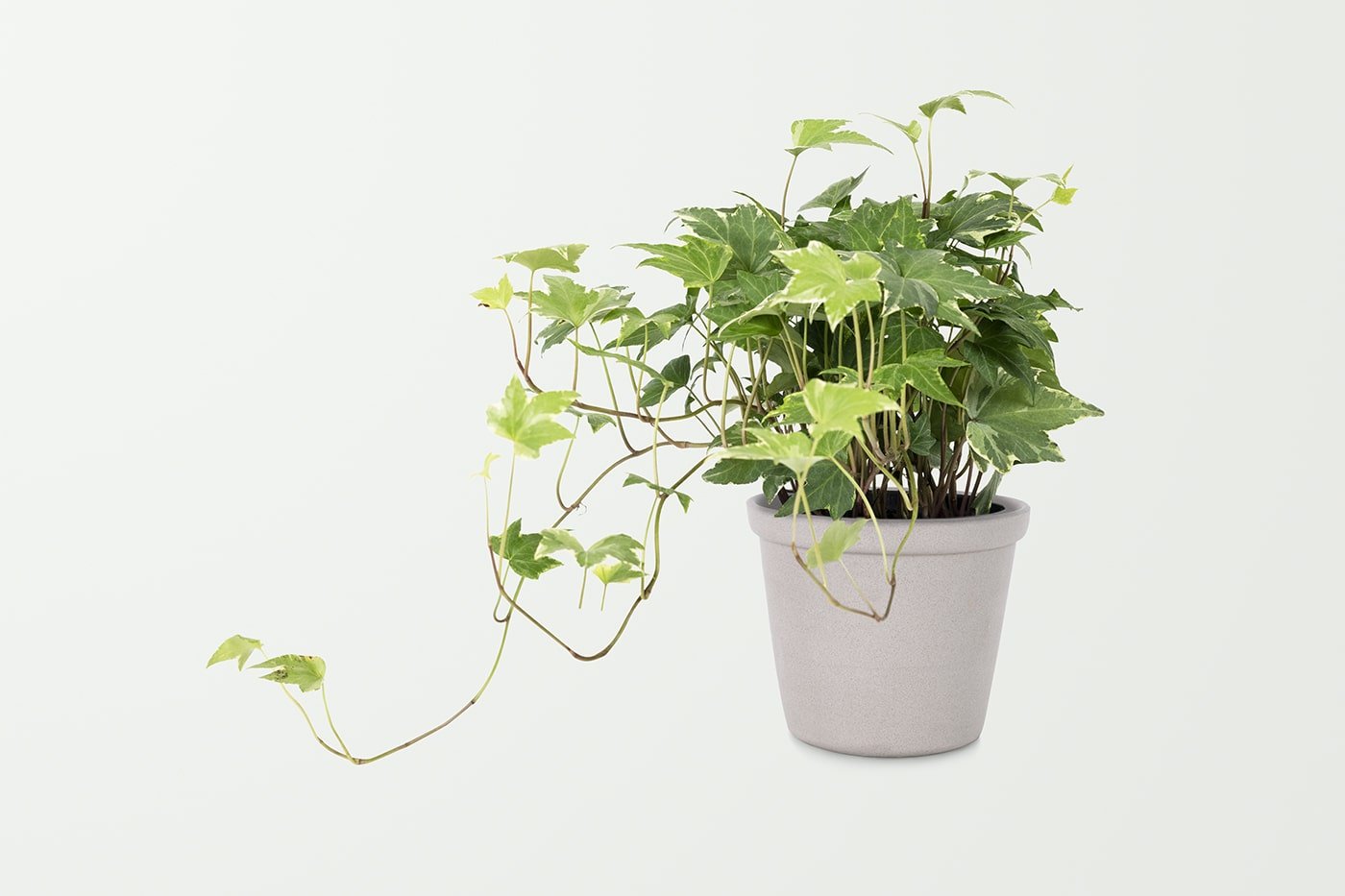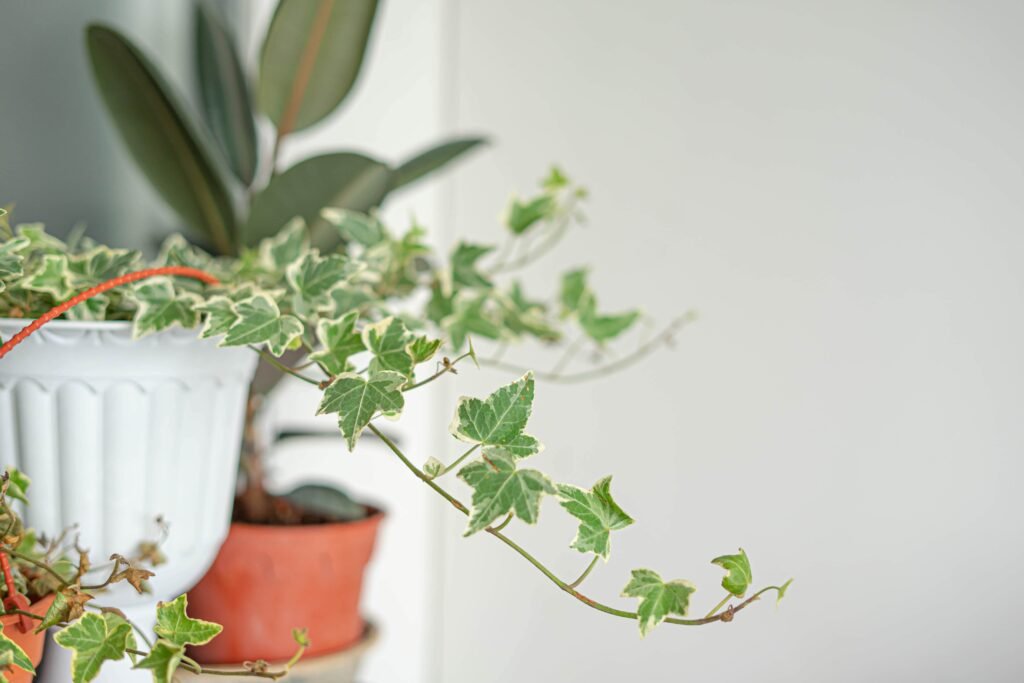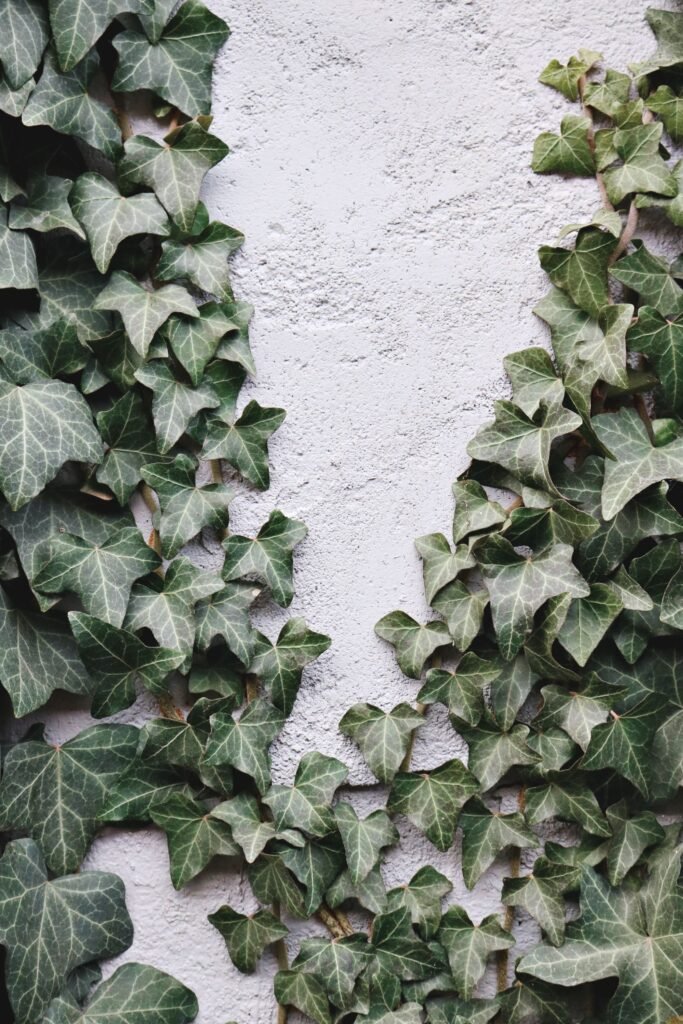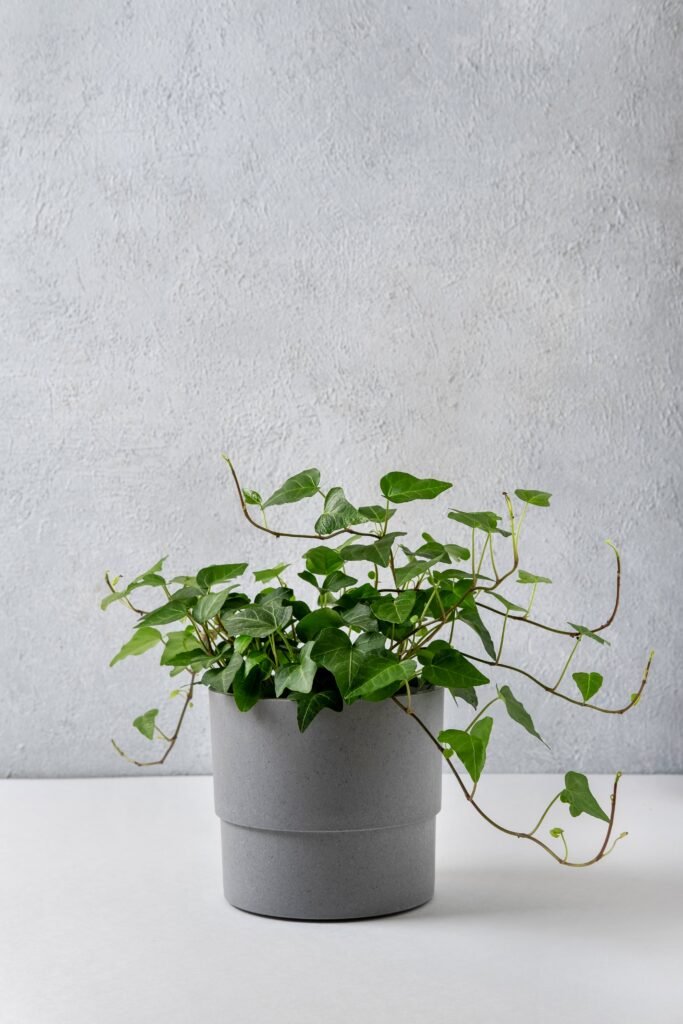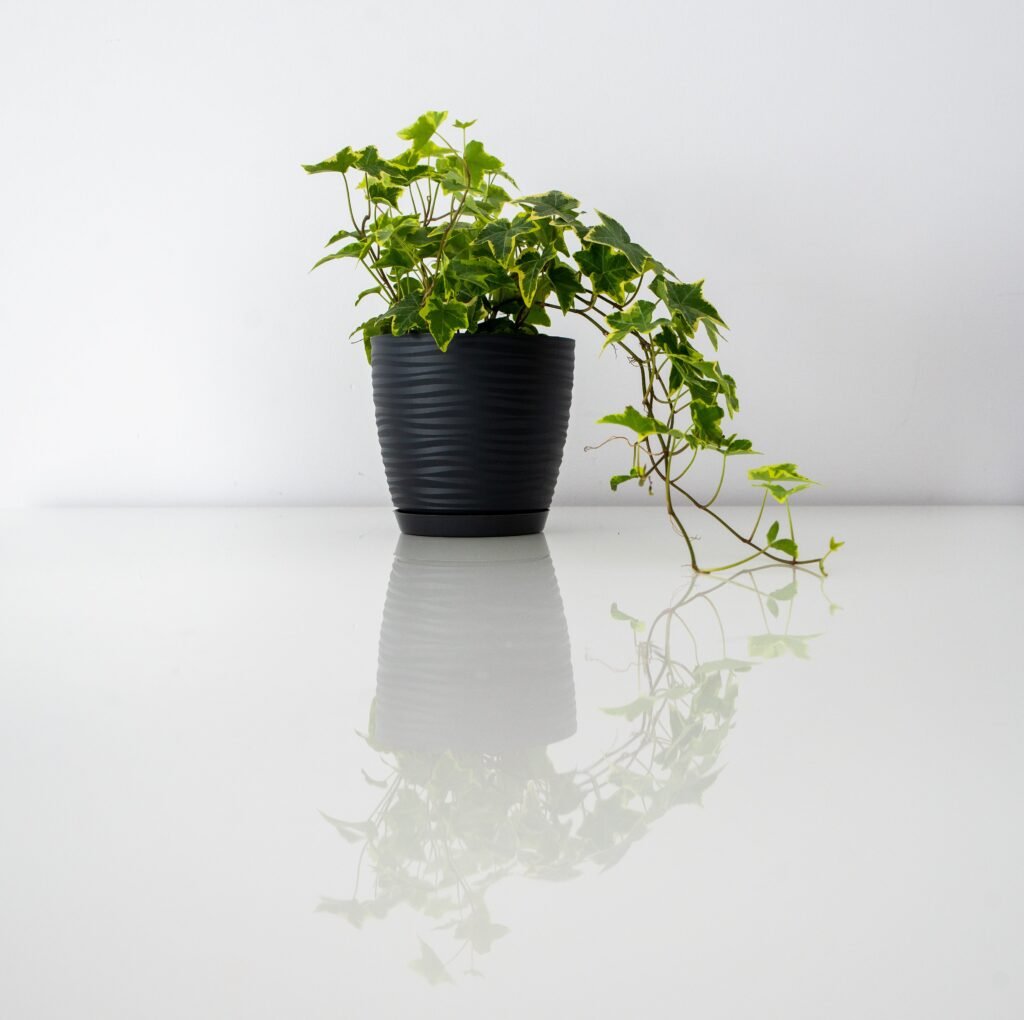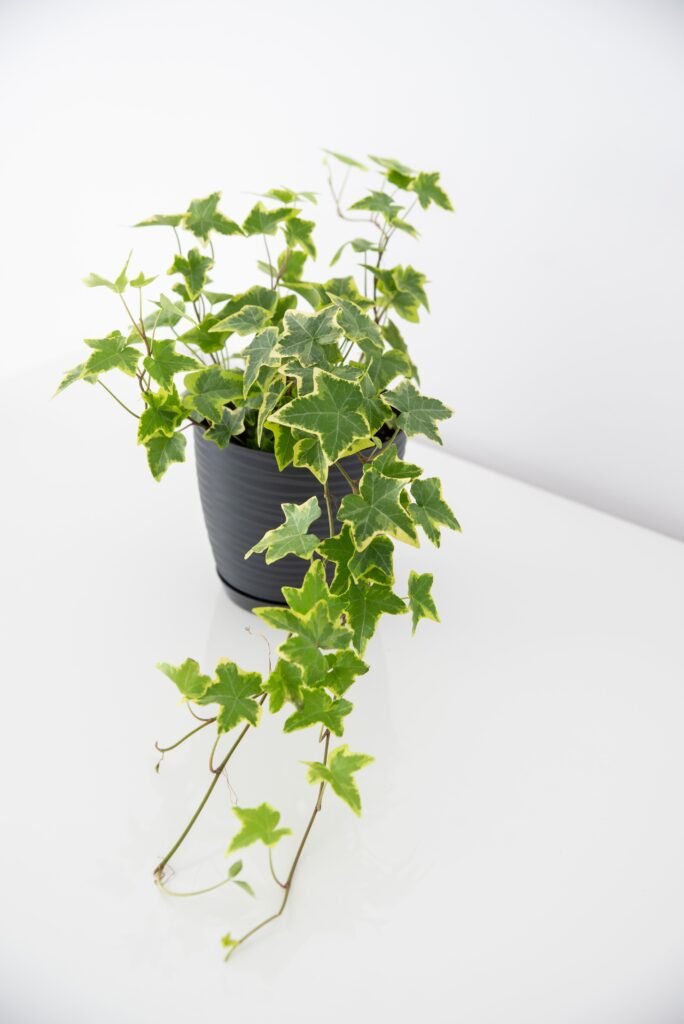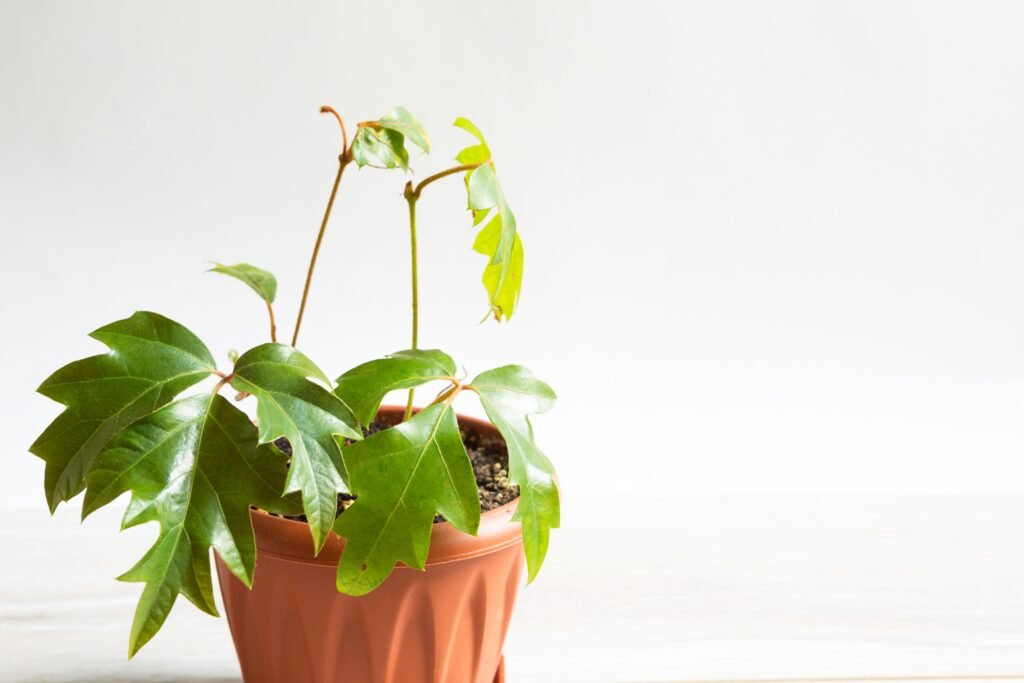IVY PLANT
- admin
- July 7, 2024
- Uncategorized
-
Post Views: 84
- 0
- lighting: Ivy with green type of foliage prefers half-shade or shade, but variegated type still likes bright diffused light, because a lot of light is required for special coloring of the leaves.
- watering: keep the soil consistently moist but not waterlogged. Water when the top inch of soil feels dry. Ensure the pot has good drainage. Ivy’s growth slows down in winter, so reduce watering during this period.
- fertilizing: fertilizing is made from March to August twice a month. Use a balanced liquid fertilizer diluted to half strength. Due to overfertilization the foliage can turn yellow, so don’t overdo it. And if there is too much nitrogen in the fertilizer, the variegated leaves can change their color into green. Reduce or stop feeding during the dormant winter months.
- humidity: Ivy plants prefer moderate humidity. They can tolerate average indoor humidity but may benefit from occasional misting. In very dry indoor environments, increasing humidity by using a humidifier or placing a tray of water near the plant can be beneficial.
- temperature: Ivy plants prefer temperatures between 50 and 70 °F. Protect the plant from cold drafts and avoid placing it near heat sources like radiators or air conditioners.
- repotting: repot Ivy plants every 1-2 years or when they outgrow their current pot. Early spring is the best time for repotting. Choose a pot that is one size larger than the current one. Ensure it has drainage holes. Use a well-draining potting mix.

